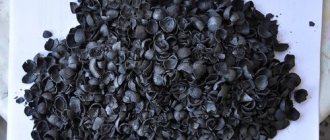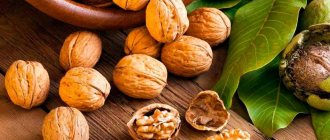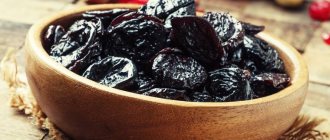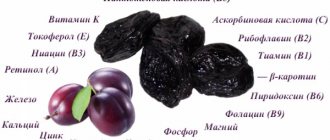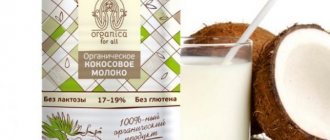Every person who has ever thought about losing weight has heard about the benefits of nuts. At the same time, there is also a widespread belief that the calorie content of walnuts is very high and if you get carried away with this product, you can only achieve the opposite result: the high energy value will cause weight gain rather than loss.
This article provides detailed information about how many calories there actually are in walnuts, how much you can eat, and how to properly combine them with your main daily menu to aid your weight loss process.
Nut varieties
Walnut
Thanks to the efforts of breeders, there are at least 15 varieties that differ in frost and drought resistance, ripening time, and fruit size.
The most popular varieties are:
- Dessert is an early-ripening, drought-resistant variety, the best option for the southern regions.
- Elegant is an unpretentious, frost-resistant, unpretentious type of nut that can grow and bear fruit everywhere.
- Abundant - has an exquisite taste, is highly resistant to brown spot, but does not withstand severe frosts. Cultivated in regions characterized by high rainfall and a warm, humid climate.
- Fruitful - winter-hardy, abundantly fruiting variety, moderately resistant to brown spot. Can grow in all regions.
- Aurora is a variety that is resistant to frost and various diseases and is cultivated everywhere.
- Dawn of the East is one of the most frost-resistant and unpretentious types of walnut, characterized by early ripening, growing throughout the middle zone.
- Giant - distributed throughout Russia, has large fruits, the weight of which can reach 10 g.
- Ideal - popular in the northern regions of the country due to its incredible frost resistance and high yield. The tree prefers moderately moist, well-lit areas.
Chemical composition
Nutritionists recommend that you definitely include walnuts in your diet, since they contain all the elements necessary for the human body:
- vitamins (A, B-1,2,6,12, C, K, PP);
- amino acids (valine, glutamine, aspargine, cysteine);
- polyunsaturated fatty acids (folic, oleic, gallic, lanolin);
- micro- and macroelements (phosphorus, magnesium, potassium, sodium, zinc, manganese, iron).
Depending on the soil, variety, climate, presence or absence of proper care, the composition and percentage of certain substances may change.
Daily norm
Although the product is considered dietary and its use can promote weight loss by normalizing metabolism, lowering cholesterol and detoxifying the body, you still cannot eat it in handfuls, because the calorie content of walnuts is quite high.
Nutritionists recommend eating only 30 grams of the product daily, which is equal to 6-8 pieces of nuts for an adult and 4-5 pieces of nuts for children.
If you start regularly eating the fruits of the Greek tree, you will soon notice their positive effect on your body.
Calorie content and BZHU
Walnut is considered one of the most high-calorie foods. The energy value of 100 g of peeled kernels ranges (depending on the variety) from 630 to 670 kcal.
The composition of the BJU is as follows:
- proteins - 16.3-17.8g;
- carbohydrates - 11.2-16.04 g;
- fat - 60.3-71.9 g.
Of these, monounsaturated and polyunsaturated (healthy) fats account for approximately 55.2-65 g, and less than 5 g remain for saturated (harmful) fats. The rest of the weight comes from water (about 4 g) and dietary fiber.
The calorie content of 1 walnut depends on its size, for example:
| Nut weight (g) | Calorie content (kcal) |
| 5 | 32 |
| 7-8 | 50 |
| 10 | 63 |
Calorie content of walnuts (per 100 g)
Many dieters try to avoid such a high-calorie product as walnuts. It seems to them that it is enough to eat one small nut, and all their efforts will be in vain.
The calorie content of walnuts is certainly high and amounts to 654 kcal (per 100 grams). But don't be scared by this number. In fact, 100 grams is approximately 50 nuts. Even an adult cannot eat such a quantity of such high-calorie fruits. Also, through simple arithmetic calculations, you can find out that the weight of 1 walnut is 5 g. From here you can understand how many calories are in one walnut. Let's consider this issue in more detail.
Benefits of walnuts
The unique composition of the walnut determines its beneficial properties as a remedy that can:
- have a beneficial effect on the gastrointestinal tract;
- increase the elasticity of blood vessels;
- normalize heart function;
- improve memory;
- raise the level of intellectual development.
It contains substances that can:
- cleanse blood vessels from cholesterol;
- normalize insulin levels in diabetic patients;
- reduce the risk of heart disease;
- prevent the development of malignant tumors;
- prevent age-related vision deterioration;
- promote weight loss;
- improve the condition of skin, nails, hair.
Walnuts, which are high in calories, can be useful for people of different ages and both sexes.
For men
Eating nuts daily will make up for the lack of calcium, zinc and magnesium, which normalize the production of the male hormone testosterone, which stimulates the secretory activity of the gonads. This will help the stronger sex maintain masculine strength and libido for a long time.
The zinc contained in nuts has a positive effect on the formation of the gonads in adolescents, and in adult men it significantly reduces the risk of developing prostatitis, prostate adenoma, and impotence. Walnuts can increase sperm activity and fight certain types of male infertility.
https://youtu.be/NuEA2TZutmk
They are also recommended for older men who want to maintain an erection at the proper level.
Also, walnuts can help build muscle, since they are a powerful source of protein, vitamins that regulate the process of protein breakdown and synthesis of muscle tissue, and substances that will relieve the feeling of fatigue, help quickly restore strength after training, and fill the body with energy.
For women
Retinol (vitamin A) contained in walnuts can have a beneficial effect on the condition of hair, nails, and skin, eliminating wrinkles and sagging. Vitamins E, B6, C, being the strongest natural antioxidants, will slow down the aging of the body and help preserve female beauty for a long time.
Mono- and polyunsaturated fats, saturating the body with all necessary nutrients, eliminate overeating, promoting weight loss and maintaining a healthy weight.
Also components of walnuts:
- reduce the risk of developing breast cancer;
- protect the nervous system, helping a woman resist stress, nervous exhaustion, and depression;
- strengthen the female body’s immunity and resistance to various types of infectious diseases;
- prevent the development of varicose veins;
- will help restore blood loss after heavy menstruation;
- will reduce the likelihood of early menopause;
- normalize hormonal levels.
During pregnancy
A walnut (the calorie content of 1 nut is 32-63 kcal) for the expectant mother will become a source of folic acid (vitamin B9) - a substance that will ensure the normal course of pregnancy and several times reduce the risk of developing pathologies of the neural tube of the fetus, as well as the heart, blood vessels and genitourinary system. systems of the unborn child.
Ingredients of walnut:
- amino acids will regulate specific processes aimed at maintaining pregnancy and stimulating the proper development of the fetus;
- Omega-3 fatty acids normalize the functioning of the stomach and intestines, relieve constipation, heartburn, and increased gas production - unpleasant companions of pregnancy;
- the vitamin complex will strengthen the immunity of the expectant mother and her baby, normalize the production of hormones, and, playing the role of a natural antidepressant, will help cope with fatigue, depression, and insomnia;
- iron will raise hemoglobin levels and reduce the risk of developing iron deficiency anemia, a common problem in pregnant women;
- microelements will strengthen a woman’s spine and relieve lower back pain, which usually occurs towards the end of pregnancy due to high weight load. Phosphorus and calcium will satisfy the fetus’s need for these elements, which it needs to form the skeleton, and it will not “claim” the mother’s reserves. Magnesium will help remove excess fluid from the body and relieve swelling in late pregnancy;
- phytosterols will cleanse the blood of excess cholesterol and prevent negative changes in blood vessels and the heart caused by increased stress on them during pregnancy.
When breastfeeding
With reasonable consumption of walnuts, a nursing mother has a chance to make milk more nutritious and, at the same time, not harm her own figure.
Nuts will saturate breast milk with substances that the baby needs for growth and development:
- complex of vitamins;
- useful minerals;
- protein, which contains 2 dozen essential amino acids, which are the “building material” for all body systems;
- natural fatty acids.
Pediatricians advise nursing mothers to include this product in their diet if the child is not gaining weight well, has low hemoglobin, or suffers from constipation: all these problems can be solved by eating walnuts. Regular consumption of it is also beneficial for the woman herself, since it will strengthen her immunity, eliminate the development of anemia and help her forget about problems with the gastrointestinal tract, bad mood, migraines, and chronic fatigue.
For children
The product is contraindicated for children under 3 years of age, but older children can enjoy it.
Walnut will be a source for them:
- amino acids necessary for normal growth;
- carbohydrates that provide energy;
- microelements that will stimulate brain function, allowing the baby to develop intellectually faster;
- macroelements (in particular calcium and phosphorus), which will strengthen bone tissue;
- vitamin that supports immunity and protects the child from various infections.
Unlike other products containing all of the above substances, nuts contain no cholesterol and few carbohydrates. They are able to regulate fat metabolism and do not lead to the formation of subcutaneous fat, which means they can be consumed even by overweight children.
Walnut is needed:
- young athletes;
- little scholars;
- children who have had infectious diseases, suffer from anemia, and get tired quickly;
- adolescents during puberty.
What is the significance of the calorie content of 1 walnut for weight loss?
Despite the high calorie content, in one of the well-known diets it is recommended to completely replace all animal fats with walnuts. As you know, any body, even during weight loss, needs fats. But, in addition to this, nuts also contain a lot of useful substances that fight bad cholesterol. This means that such fats will be much healthier than those of animal origin. But this is not all the benefits that walnuts can bring during a diet.
The calorie content of 1 nut, as is known, is 32.7 kcal, and the amount of fat in 5 g (1 nut) is 3.26 g. It is easy to calculate this, given that 100 grams of nuts contain 65.2 g of fat. 4-6 pieces, which doctors recommend eating daily, contain 13-19 g of fat, with the norm for a healthy person being 40 g.
All these calculations allow us to conclude that walnuts are beneficial for the body and can be eaten even during a diet.
Harm and contraindications for use
Walnuts, which are very high in calories, can be dangerous if consumed in excess or if you consume stale, rancid fruits.
You should consume nuts with caution (or exclude them from your diet) if:
- large overweight, obesity (due to high calorie content);
- tendency to allergies (the nut contains substances that can cause an allergic reaction);
- under 3 years of age (it is difficult for a child’s stomach to cope with such an abundance of fats, in addition, the baby may choke on a nut);
- increased blood clotting (calcium contained in nuts can provoke the development of thrombosis in this pathology);
- inflammation of the pancreas, when you should avoid any fatty foods, including nuts;
- intestinal disorders (walnuts are a rather heavy food);
- skin diseases (even a small amount of nut can lead to an exacerbation of the disease).
Useful properties and contraindications
The product has a positive effect on the body:
- Strengthens the immune system.
- Helps treat anemia.
- Strengthens the walls of blood vessels.
- Helps get rid of dysbiosis.
- Stimulates brain activity.
- Increases the speed of metabolic processes.
- Has a calming effect.
Walnuts must be eaten by people living in areas with high levels of radioactivity.
The product is contraindicated for people prone to allergies, with serious intestinal disease and poor blood clotting.
For men
The vitamins and zinc contained in the kernel contribute to the production of testosterone in men. To do this, honey is added to the crushed nuts.
Consumption of this product reduces the risk of diseases such as adenoma and prostatitis.
For women and children
For women, the product should be used in the following cases:
- with blood loss;
- to eliminate the risk of varicose veins;
- to relieve nervous tension.
It is useful for a child to eat nuts to increase brain activity. Regular inclusion of this product in your diet will help improve your academic performance.
During pregnancy and breastfeeding
It is necessary to eat nuts during pregnancy, since during this period the woman’s body needs a large amount of useful substances.
In the first years of a baby's life, mother's milk is the basis of his nutrition. The beneficial properties of the nut product for nursing mothers include:
- available in the composition of complex carbohydrates and polyunsaturated acids;
- in the content of a large amount of protein in the nuclei.
The daily intake of walnuts during pregnancy is determined by the attending physician.
Daily value of product
In order for walnuts to bring only benefits and not cause unpleasant effects, it is necessary to consume it only within reason, remembering the high calorie content of the product. The daily norm depends on several factors: gender, age, lifestyle, and the presence of any diseases.
For healthy men and women aged 17-45 years, whose activities are not associated with excessive physical exertion or intensive sports, the limit is:
| Floor | Daily norm (pcs.)* | At one time (pcs.)* |
| Women | 12 | 4 |
| Men weighing up to 80 kg | 21 | 7 |
| Men weighing more than 80 kg | 27 | 9 |
* means medium sized nut.
If the diet contains other types of nuts, seeds, halva, nut butter, the amount of nuts must be reduced. With a sports diet, the norms are different and are determined depending on the type of sport and the physical data of the athlete.
In addition, the maximum number of nuts:
- if you are overweight, you should limit it to 2-3 per day;
- after 45 it is recommended to reduce the daily intake by a third;
- older people over 60 should eat no more than 3 nuts per day;
- during pregnancy, the maximum daily intake is 5 pcs. per day, and if you are prone to allergies - 2;
- When breastfeeding, it is recommended to start consuming foods no earlier than the baby turns 2 months old; the maximum daily intake is 2 nuts. Subsequently, the norm can be increased, but the total amount of nuts should not exceed 30 g per day - this is quite enough to increase the calorie content of milk.
It is not recommended to give nuts to young children. It is advisable to introduce them into the diet no earlier than 3 years (some pediatricians believe that no earlier than 5 years), starting with ¼ of a nut. It must be crushed and added to any dish. Then you can gradually increase the norm, bringing it to 2-3 nuts (for children under 4 years old). Children 5-6 years old can, in the absence of contraindications, eat up to 4 nuts per day.
The use of nuts in dietetics and weight loss
If you eat nuts in reasonable doses, they will help you lose weight due to their following qualities:
- a unique composition that includes all the ingredients necessary for optimal metabolism;
- the ability to permanently eliminate the feeling of hunger due to plant fiber, which, swelling in the stomach, creates a feeling of fullness;
- in order to digest a walnut, you will need to spend quite a lot of energy: this means that the carbohydrates that enter the body will be used “for their intended purpose” and not replenish subcutaneous fat reserves;
- the components of nuts have the ability to reduce cholesterol levels, which are usually elevated in obese people, clear blood vessels of it and, due to this, restore normal blood flow, starting the processes of self-cleansing of the body and removing all excess;
- pinolenic acid contained in nuts stimulates the production of substances that block the feeling of hunger and relieve pathological appetite.
According to the medical journal Obesity, people who eat walnuts at least once every 2-3 days are less likely to accumulate excess weight.
Based on nuts, nutritionists have developed several types of nut diets, based on the ability of this product to fight excess appetite, replace animal fats with vegetable fats and activate metabolism, including the processes of breakdown of subcutaneous fat:
- A 3-day fruit and nut diet, which will ensure the loss of 2 kg of excess weight. Can be used monthly. Nuts are combined with fruits, fruit juices, vegetable salads;
- A 5-day nut diet will give the effect of 3-4 kg lost. You can repeat it once a month. Nuts are consumed together with kefir, fruit juice, boiled lean beef;
- A 10-day nut diet will ensure a loss of up to 5 kg, and will not require heroic efforts from those losing weight. Nuts are complemented with fruits, vegetable soups, and dairy products. It is possible to consume low-fat cottage cheese and eggs.
However, when using nuts for weight loss, you should remember their high nutritional value: 20 g of the product is enough for a snack, and 100 g is an alternative to a full 3-course meal.
Fatty acid
These are essential nutrients responsible for a huge range of functions. All fatty acids are divided into saturated and unsaturated.
Saturated fatty acids
The biological functions assigned to these substances are to supply the body with energy. They participate in the processes of hormone synthesis and promote the absorption of vitamins and microelements.
Monounsaturated fatty acids
The main value of these substances lies in the activation of metabolic processes. The main representative of omega-9 (oleic acid) serves to prevent heart attacks of the brain and heart by regulating cholesterol levels in the blood. Increases the elasticity of blood vessels, prevents blood clots, and supports the immune system. Regulates carbohydrate metabolism and is responsible for optimal blood glucose levels.
Polyunsaturated fatty acids
In terms of the percentage of these fats, walnuts occupy first place among plants. According to research in the New England Journal of Medicine, the fatty acids in nuts help reduce bad cholesterol levels by 10%, and with it the likelihood of heart and vascular problems.
Polyunsaturated fats contain omega-3 and omega-6, which are important for cell growth and proper brain function.
Important!
Unlike oleic acid, polyunsaturated fats are not produced by the human body and must necessarily come from outside.
| Fatty acid | 100 grams contain | % of daily consumption |
| Saturated | 6.2 g | — |
| Monounsaturated | 18.8 g | 78 |
| Polyunsaturated | 34.3 g | 196 |
The table shows the fatty acid content per hundred grams of nuts
Healthy breakfast recipes for weight loss
Walnuts, which are too high in calories, are widely used in diets aimed at normalizing weight. However, it must be consumed in small quantities, preferably in the first half of the day, when the body needs energy.
To prepare a delicious dietary breakfast, you can combine nuts with raisins, dried apricots, honey, prunes, and add them to cereals, vegetable and fruit salads.
Fruit salad with nuts
To prepare the dish you will need:
- 2 bananas;
- 1 apple;
- 4 nuts.
Preparation:
- Cut the apple into slices or cubes.
- Mix the mixture with chopped nuts.
- Using a blender, make a sauce from bananas and pour it over apples and nuts.
Oatmeal with fruits and nuts
Ingredients you will need:
- oatmeal is a source of “slow” carbohydrates;
- fruits - fiber, which will create a feeling of fullness;
- nuts are vegetable protein.
Preparation:
- 2 tbsp. l. Boil oatmeal in water.
- Add 50 g of fruit and 1 tbsp to the container. l. crushed nuts.
- Mix everything well.
Pumpkin cocktail with walnuts.
The cocktail, which tastes like pumpkin pie, will help you lose weight, strengthen the immune system, and have a beneficial effect on your eyes and skin thanks to the vitamin A contained in pumpkin and the complex of amino acids found in walnuts.
Preparation:
- Add 2 tbsp to 350 g of water or natural yogurt. l. vanilla protein powder, 1 tbsp. l. crushed nuts, cinnamon, pureed pumpkin.
- Mix the mixture until the mixture has the consistency of sour cream.
- Beat everything with a blender.
Yogurt with nuts
This dish is a morning dish, but it needs to be prepared in the evening.
You will need:
- walnuts;
- natural yogurt;
- any fruit in any quantity.
Preparation:
- Mix yogurt with chopped nuts in a blender.
- Top the resulting mixture with fruit.
- Sprinkle the dish with coconut flakes and put it in the refrigerator until the morning.
Banana breakfast
Breakfast for those losing weight is prepared quickly, looks beautiful and relieves hunger for a long time.
Preparation:
- Cut the banana into 2 halves and place on a plate.
- Lay out in layers - muesli mixed with chopped walnuts, low-fat cottage cheese, to which natural yogurt has been added (until a paste-like mass is obtained), honey.
The number of ingredients is arbitrary.
Millet with walnuts
A tasty and satisfying dish that will satisfy your hunger for a long time.
To prepare it you will need:
- prunes - ½ cup;
- walnuts - 2 tbsp. l.;
- millet - 1 tbsp.;
- water – 2 tbsp.;
- sugar, salt, butter (if desired).
Preparation:
- Chop the washed prunes and boil for 10 minutes.
- Pour millet into the mass, add salt, add sugar, and cook until tender.
- Put nuts (chopped or whole kernels) into the finished porridge, you can add butter.
How to properly store walnuts without shells
If nuts are prepared for future use for long-term storage, then it is advisable to leave them in the shell, which will increase their shelf life by up to a year. Shelled walnuts are more convenient to use, but will require special conditions so that all their valuable qualities do not disappear, and the fruit itself does not become moldy and begin to taste bitter.
The following storage options are possible for shelled nuts:
- At room temperature: Requires a dry, dark place. Nuts are stored in a tightly buried glass or metal container for no more than 2 weeks.
- In the refrigerator or dry cellar: place the nuts in an airtight container that is placed on a shelf (not on the door). Here they can lie for about six months.
- In the freezer: with blast freezing, the fruits are stored for a whole year. The appropriate freezer mode should be set in advance so that the temperature there has time to drop to the desired values. It is recommended to divide the nuts into portions, each of which is packed in an airtight container.
Thawed nuts must be consumed within 24 hours; they cannot be re-frozen.
The surface of peeled nuts purchased in a store may contain bacteria, dust, and other contaminants, so before storage they must be disinfected by rinsing thoroughly in warm water and calcining in a frying pan or oven (for an hour at low temperature to remove excess moisture).
In the future, regardless of the chosen storage method, the product must be periodically checked, removing moldy, darkened or other signs of spoilage: they cannot be eaten, even after heat treatment. It is easier to deal with walnuts in the shell: they are placed in any container (linen bags, wooden boxes, glass jars) and stored in a dark, dry place for a year, periodically checking for mold.
Calorie content 1 pc.
Walnut is rightfully considered one of the most paradoxical products of a healthy diet: after all, its calorie content is considered very high (in comparison with other recommended dishes), but at the same time it is excellent for the diet!
Below the article provides information on how many kcal are in peeled walnuts per 100 grams. Since the fruits themselves are not very heavy, but at the same time quite filling, a person will want to eat no more than seven to eight whole fruits at a time (as a rule, it is more common to eat halves of kernels). The weight of such a portion is about 30 g, and through a simple mathematical calculation we can calculate that the calorie content of 1 piece. walnut is no more than 30 kcal . This figure does not sound scary at all, even for those who very carefully monitor their weight and try to calculate the calorie content of their daily diet as accurately as possible.
This is interesting! Sunflower seeds - benefits and possible harm from consumption.
Use for various diseases
Medicines prepared from walnuts can be an effective and inexpensive alternative to pharmaceutical drugs.
For example, green walnut tinctures are used:
- for many diseases of the stomach and intestines;
- to eliminate problems of the genitourinary system;
- as prevention of cancer;
- as an adjuvant in the treatment of tuberculosis and leukemia;
- for vascular diseases.
Walnut jam is an excellent and tasty remedy for combating extra pounds, chronic fatigue caused by vitamin deficiency, stress, bad mood and insomnia. It can also improve performance and strengthen memory.
As for ripe walnuts, they are used everywhere in homeopathic medicine for the purpose of:
- alleviating the condition of patients with metabolic syndrome;
- prevention of cardiovascular diseases;
- normalization of pressure in hypertension;
- for anemia, as a means of increasing hemoglobin levels;
- to combat helminths;
- as a harmless remedy for constipation, dysbacteriosis, and digestive problems;
- in the treatment of impotence in men;
- as a prevention of obesity.
The list is not complete, but it is enough to evaluate the capabilities of the walnut, which can become an exquisite high-calorie delicacy, a medicine, and a means of preserving youth, beauty and health for a long time.

